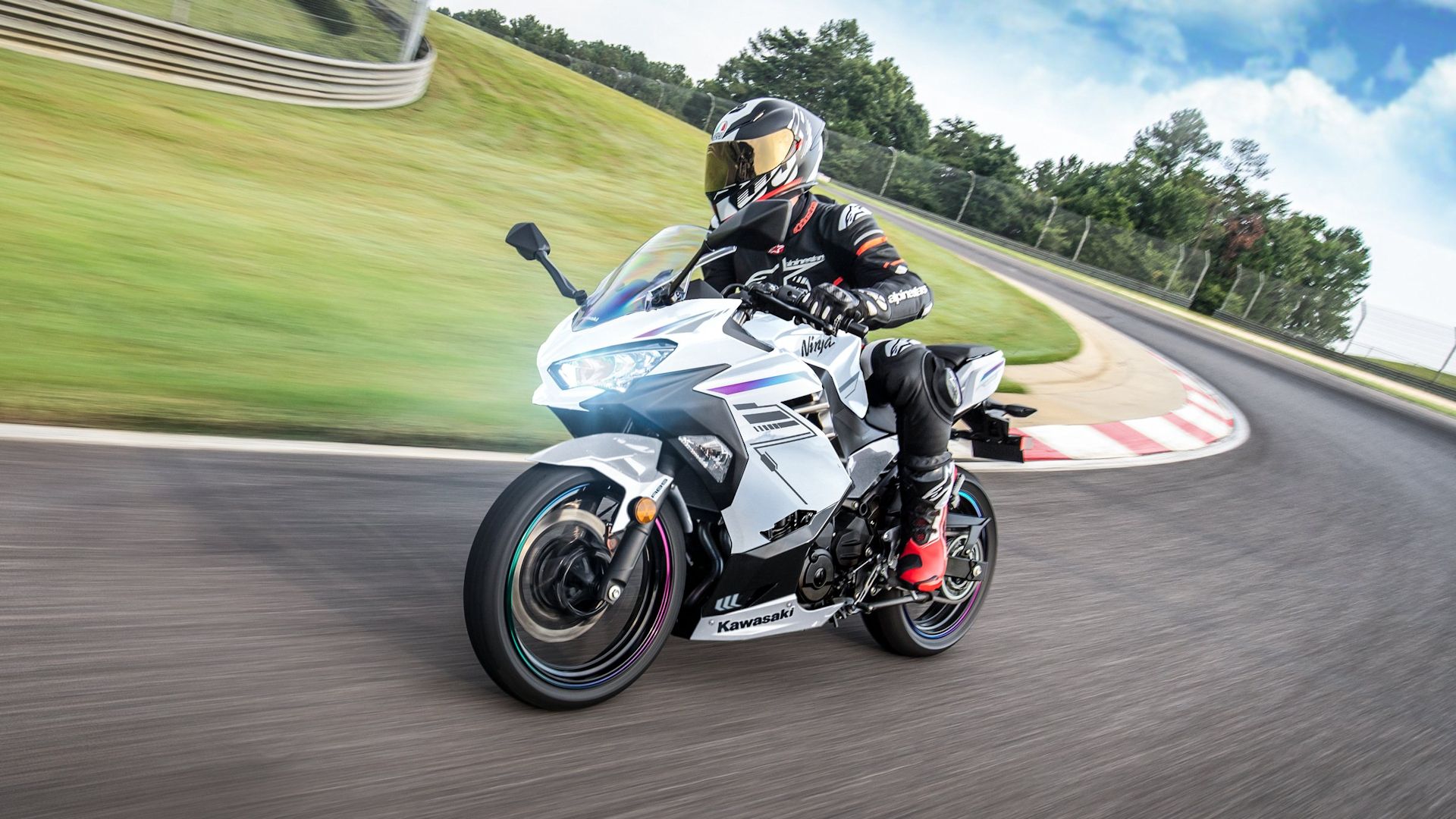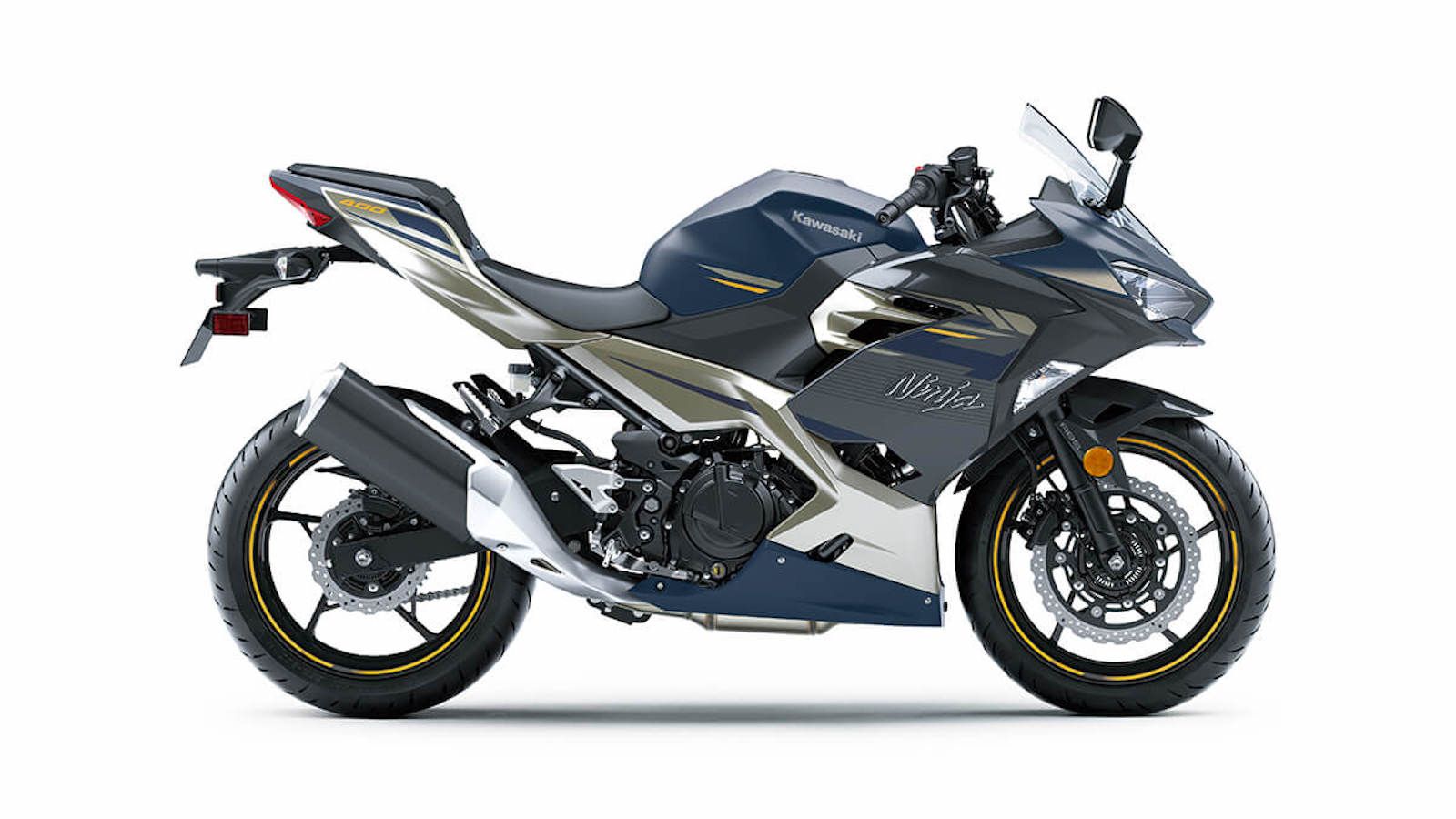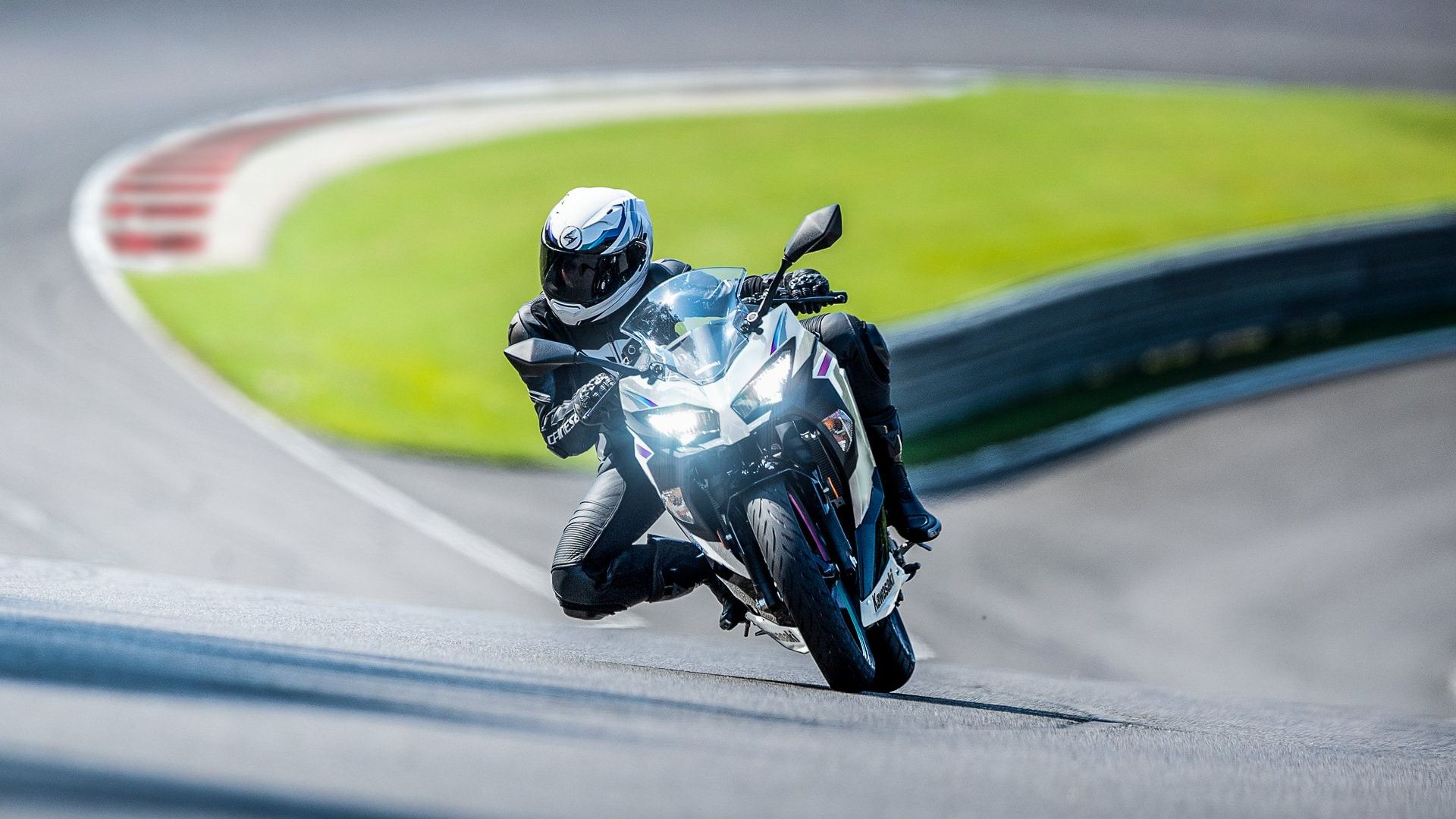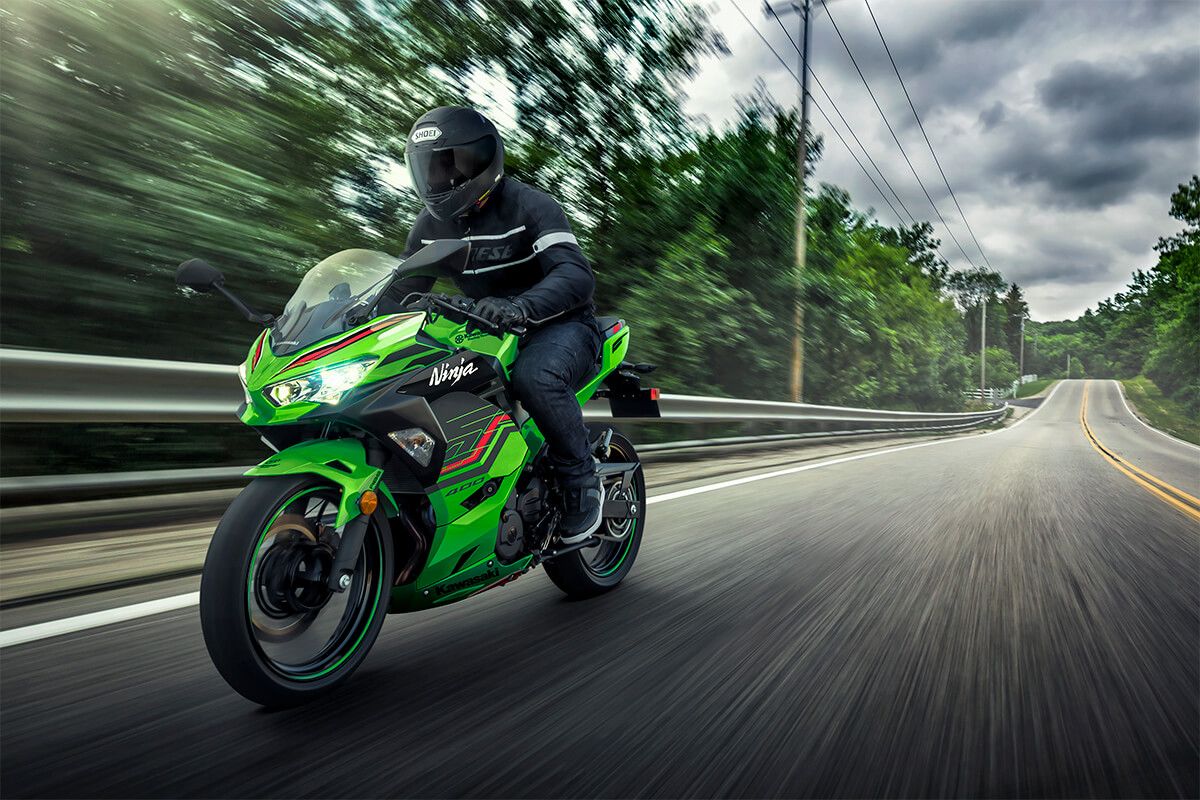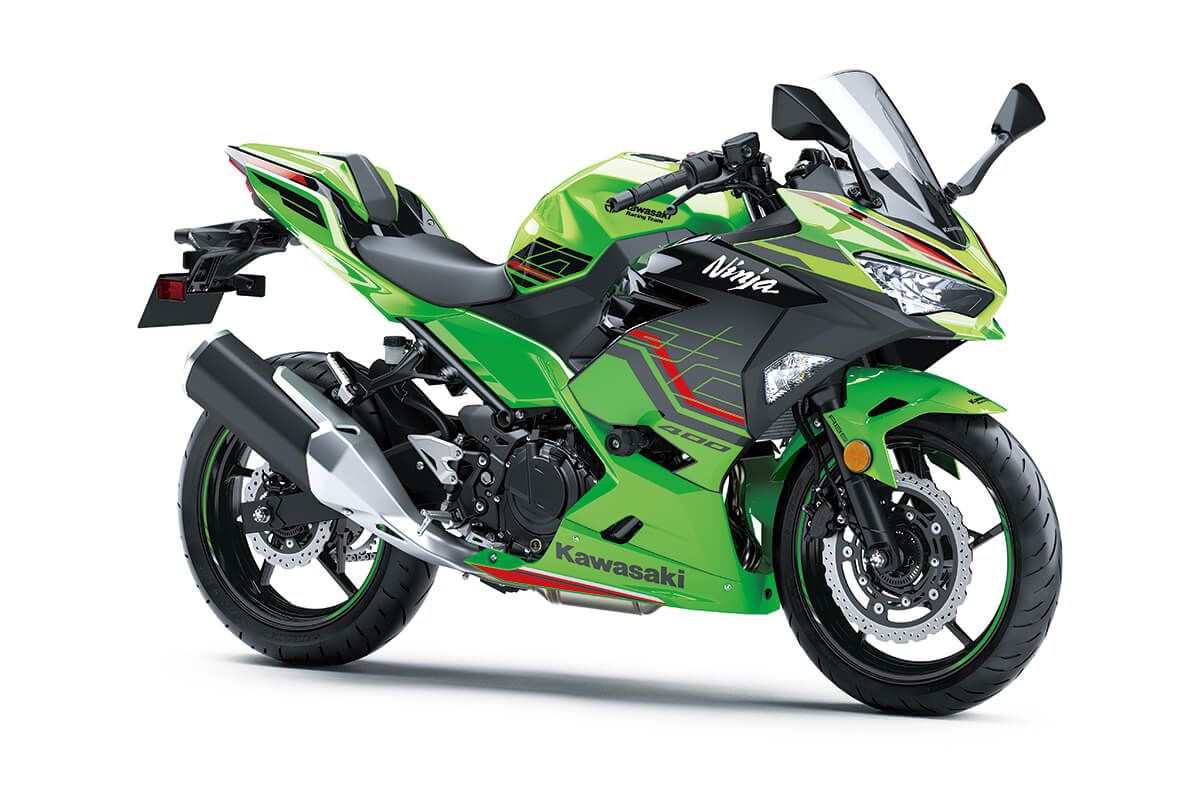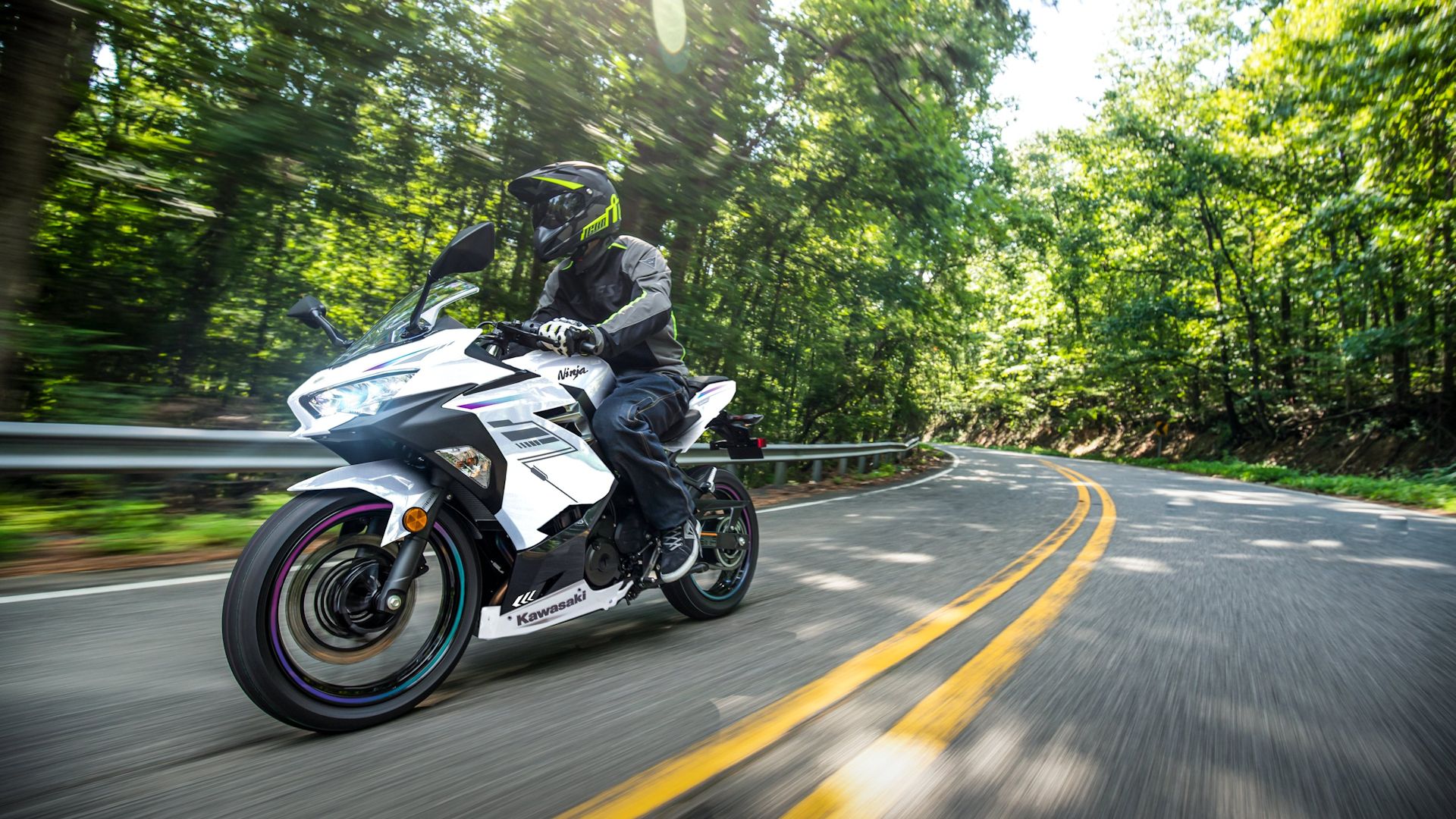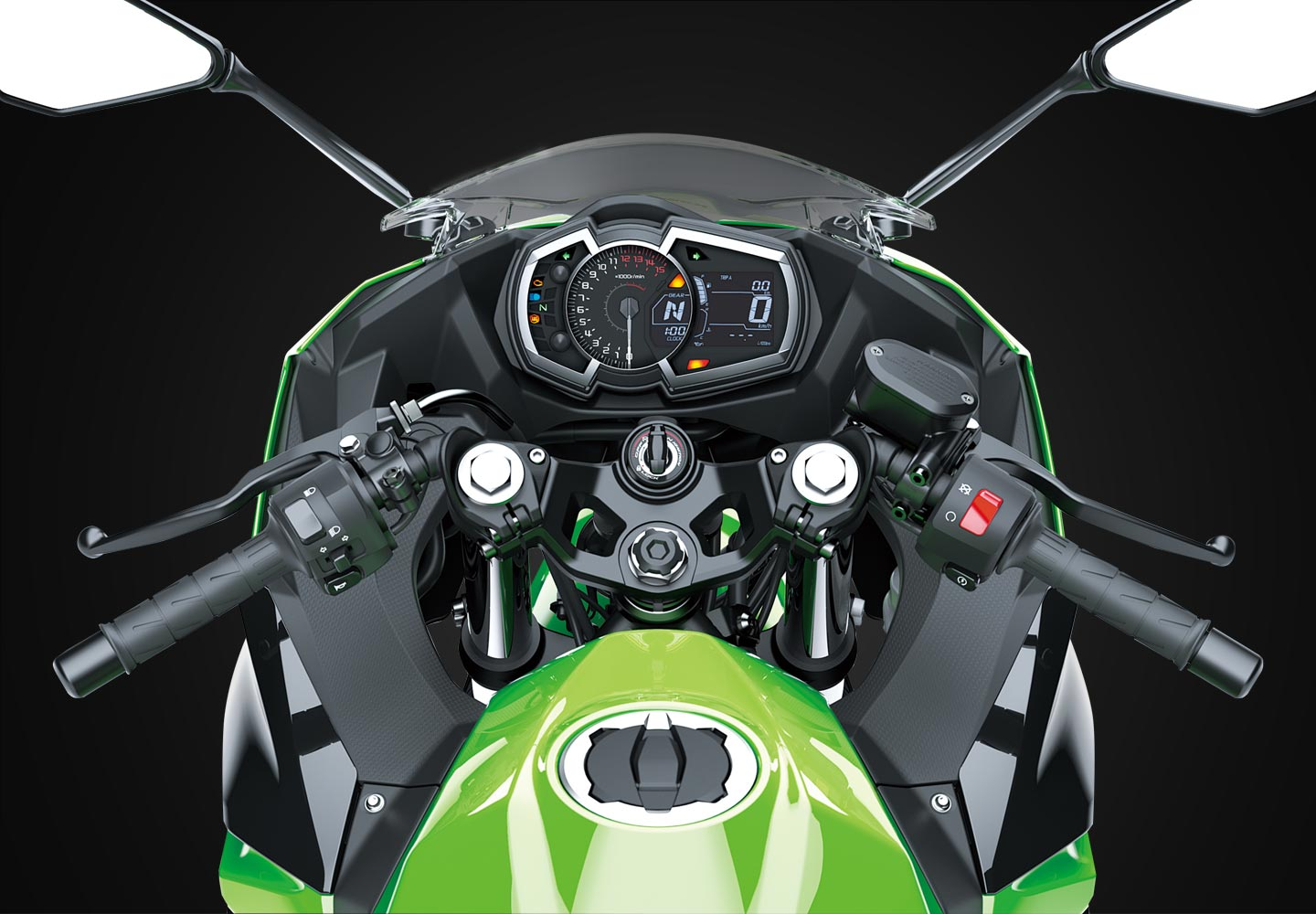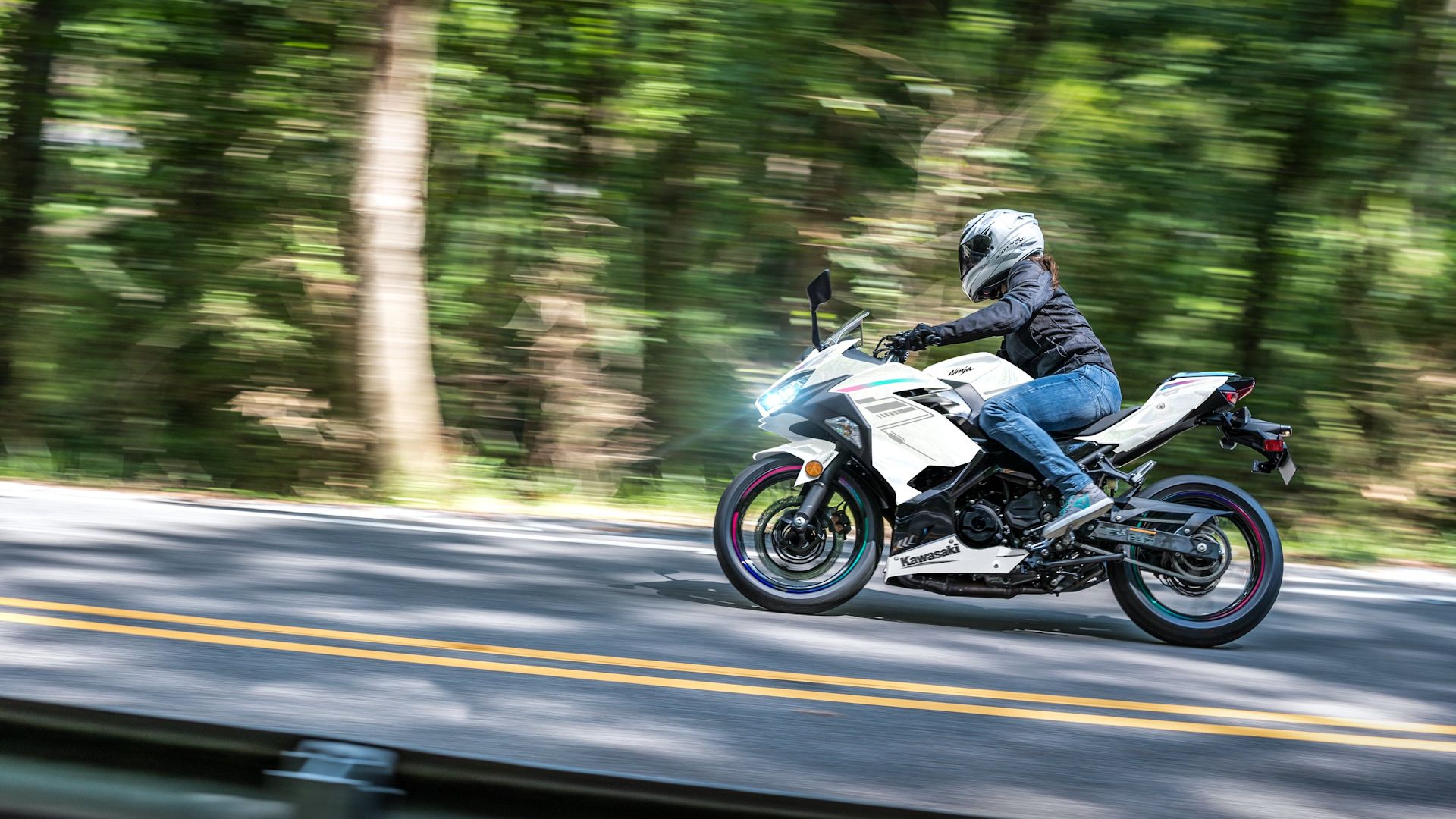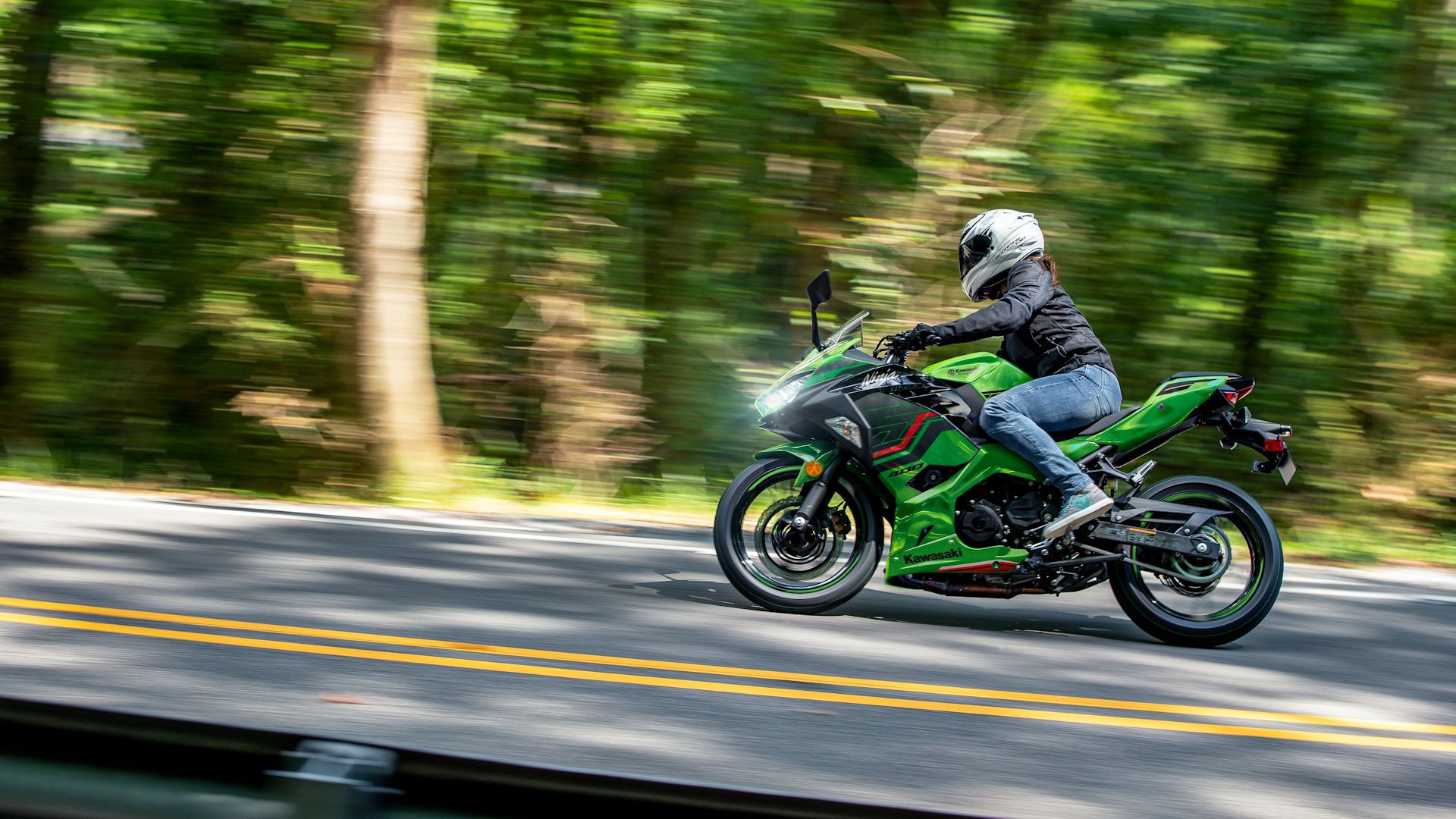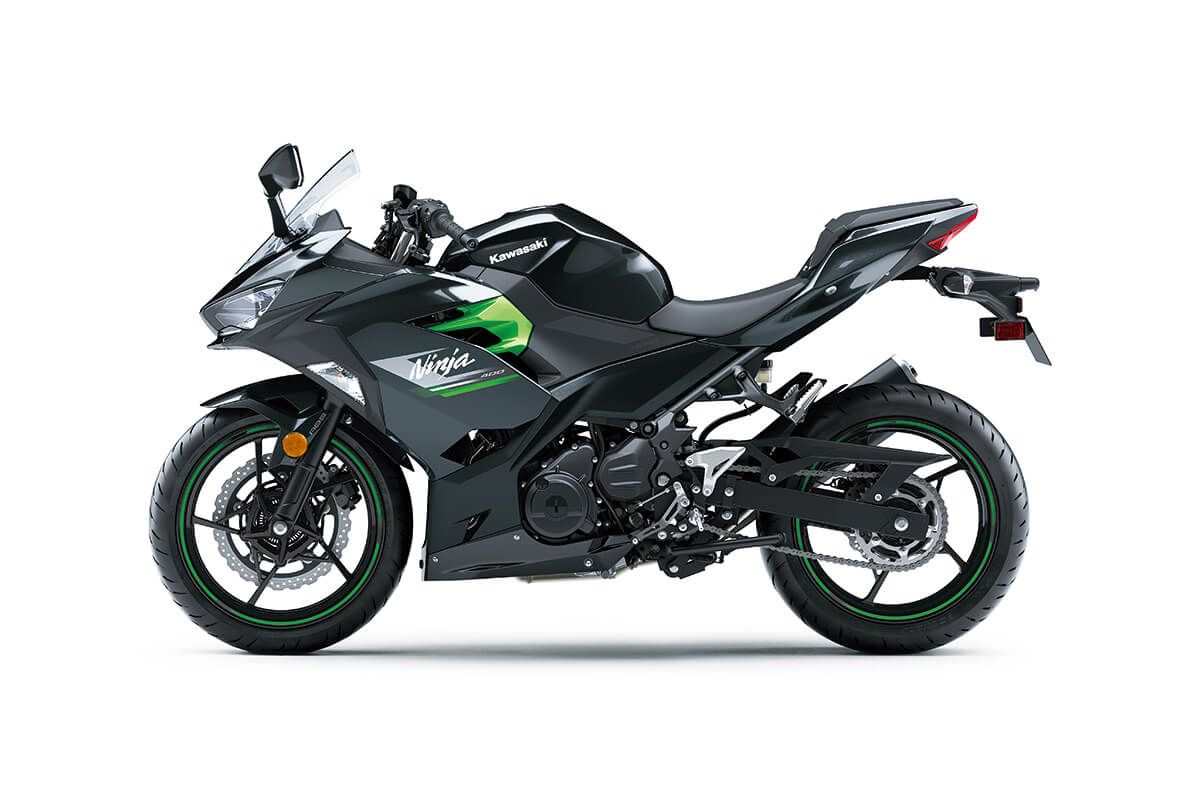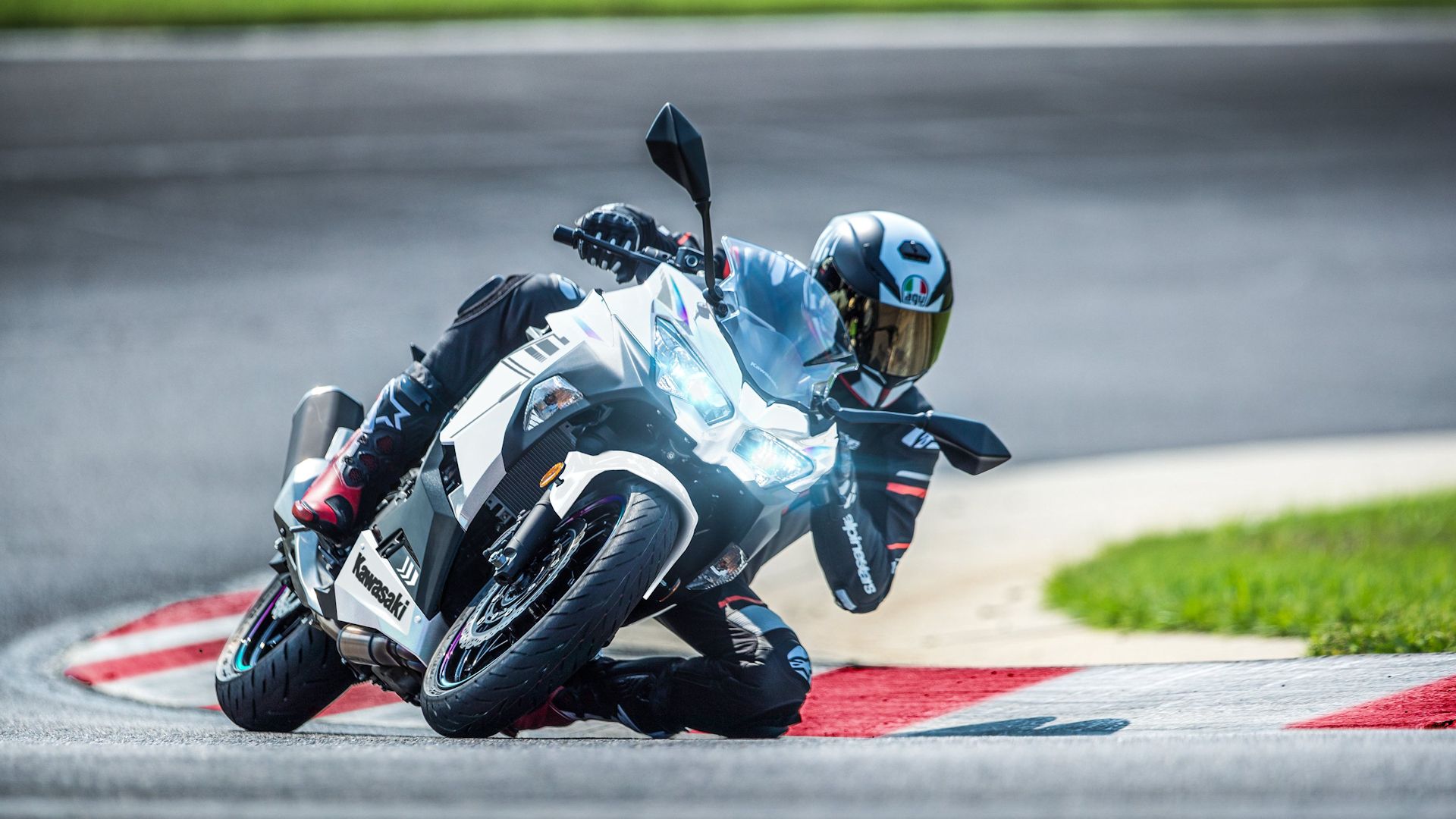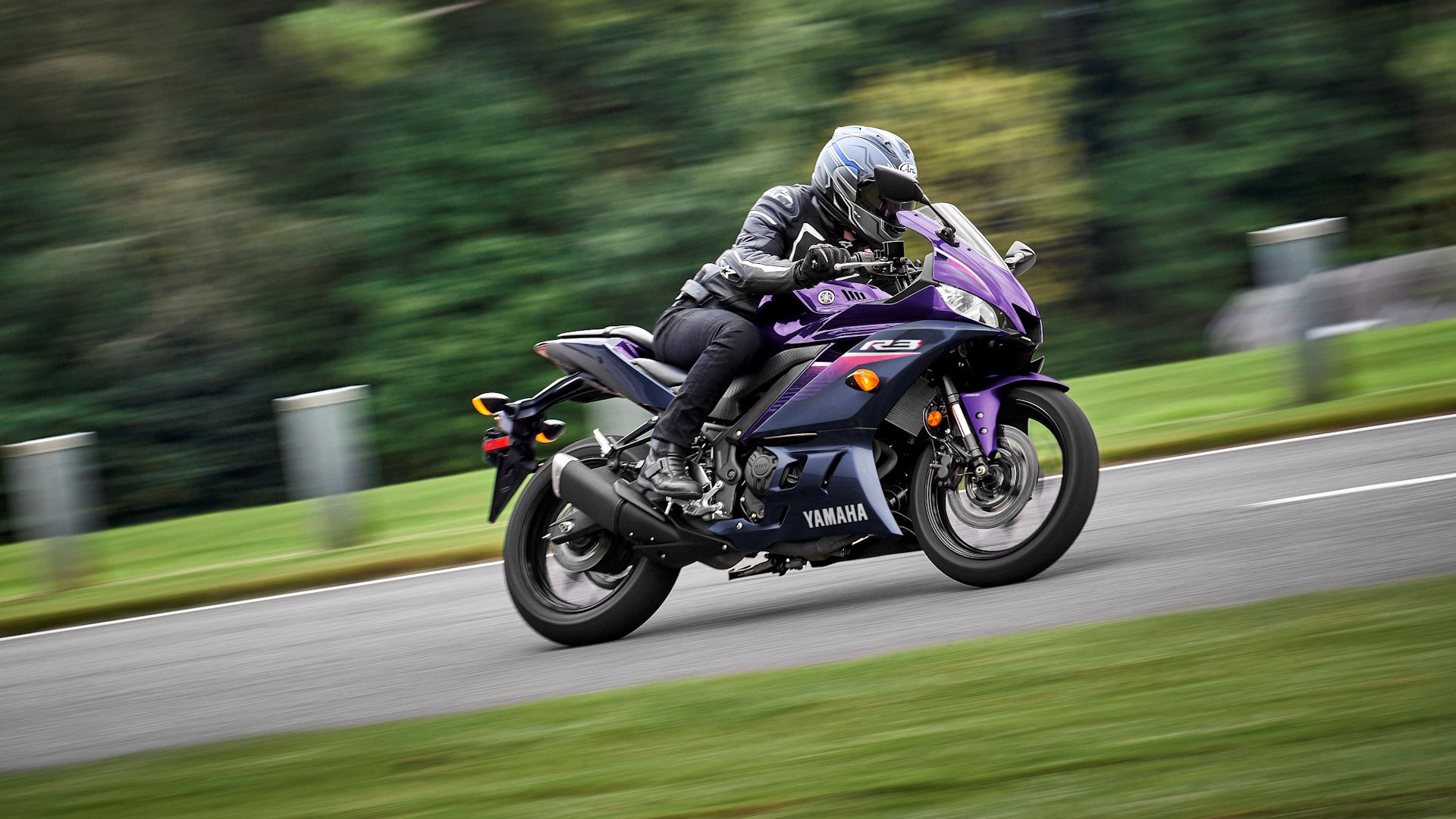Kawasaki carries its Ninja 400, Ninja 400 ABS, and KRT Edition into MY2023 with the same package of goodies that has held it in good stead globally, just with some new colorways. The proven 399 cc engine reprises its role, while the rest of the build comes centered around aerodynamic performance.
2023 Kawasaki Ninja 400
- Compact 399 cc engine
- Available ABS
- LED Lighting
- Nimble & Agile
- Aggressive Ninja Styling
- Model: Ninja 400
- Engine:: 399 cc Parallel Twin
- Power Output: 44.8 HP @ 10,000 RPM
- Torque: 27 HP @ 8,000 RPM
- Transmission: Five-Speed Manual
- MSRP: $5,299
- Affordably Priced
- Manageable Power
- Relaxed Rider Triangle
- Lack Of Suspension Adjustments
- Lack Of Electronic Rider Aids
- Uninspired Colorways
2023 Kawasaki Ninja 400 Performance And Capability
Kawasaki claims the largest-in-class engine with its 399 cc displacement parallel-twin, offers strong engine performance. The 2023 Ninja 400 produces 44.8 horsepower and 27 pound-feet of torque. At the top end, those ponies max out at 10,000 rpm even, while the grunt tops out at eight grand. With approachable power, these figures point to an engine that likes to be wound up pretty tightly indeed.
The twin-cylinder power flows through a slipper-type clutch that adds a layer of protection by limiting the amount of backtorque before it makes it to the engine as on hard downshifts and engine-braking actions. That's a cool feature, but other than the optional ABS feature, that's the closest the Ninja 400 comes to any kind of safety suite.
Bore and stroke mic out at 70 mm and 51.8 mm respectively to give it an 11.5-to-1 compression ratio that will prefer premium road champagne. Induction control falls to the dual, 32 mm throttle bodies.
After the transmission, a sealed chain final drive completes the drivetrain with an overall drive ratio that turns out a Ninja 400 top speed of 116.7 mph at the redline. It does zero-to-60 in 4.35 seconds and the quarter mile in 13.2 seconds.
Engine & Drivetrain | |
|---|---|
Engine | Liquid-Cooled, Four-stroke, DOHC, Parallel Twin |
Displacement | 399 cc |
Bore x Stroke | 70 mm x 51.8 mm |
Compression | 11.5:1 |
Power | 44.8 HP @ 10,000 RPM |
Torque | 27 LB-FT @ 8,000 RPM |
Fuel System | DFI® with dual 32mm throttle bodies |
Final Drive | Sealed chain |
Clutch | Assist & Slipper Clutch |
Gearbox | Six-speed |
Design
This is absolutely an example of form-follows-function. The bodywork comes tweaked for low-resistance penetration, no doubt with the benefit of many happy hours in the wind tunnel. A vented and abbreviated front fender helps guide incoming air to the radiator for bonus heat reduction.
Dual, LED headlights split the night, while up top, a bubblescreen punches a hole in the weather for the pilot, but you have to nearly put your chin on the tank to find it. The mirrors ride on rather long standoffs, which makes them seem a bit vulnerable. However, I like what they did with the blinkers that ride in recesses on the edge of the engine cowl. Tasteful, compact, and well out of harm's way. The high-grade multifunction dash instrumentation packs a gear position indicator.
A fuel capacity of 3.7 gal. gives the “400” a sport-typical flyline, and it comes with a strong wane at the rear where it meets a narrow waist and saddle. Not only does this allow for fancy body English, but it also can be confidence inspiring when it's time to deploy your training wheels at a stop.
The narrow seat design with pillion pad is more about looks and less about comfort. It comes accompanied by the usual flip-up footpegs, so you can share the fun with a friend right off the showroom floor.
Kawasaki Ninja 400 Specs | |
|---|---|
Length | 78.3 in |
Width | 28.0 in |
Height | 44.1 in |
Seat Height | 30.9 in |
Wheelbase | 53.9 in |
Ground Clearance | 5.5 in |
Fuel Capacity | 3.7 gal |
Curb Weight | 366.0 lb (ABS), 361.6 lb (non-ABS) |
Chassis
High tensile-strength steel makes up the tube-type Trellis frame on the Ninja 400 for the strength it brings to the bones. The factory took care to tune the lightweight Trellis frame for weight savings by dropping ounces where they could. This adds up to help give this base-model Ninja its 361.6-pound curb weight, or 366 pounds with the single piston caliper ABS model.
You'll have to use your imagination though as the frame is all but completely hidden under the bodywork. I like the look. It just seems well put together in spite of its lowish displacement. The raised clip-on style handlebars are ideal for added comfort.
The suspension is pretty much plain vanilla with fixed value, 41 mm forks ahead of a spring preload-adjustable shock. Suspension travel is fairly generous at 4.7 inches up front and 5.1 inches out back, which should be plenty for racing shenanigans and the roughest of urban jungles.
The cast wheels are symmetrical with a 17-inch diameter front and rear. They come shod in a 110/70 ahead of a 150/70 in a street tread. Since it is so light, the powers-that-be decided on a single front brake with a 310 mm disc and twin-piston anchor, while out back, a 220 mm disc and single pot caliper take care of business.
Chassis & Suspension | |
|---|---|
Frame | Trellis, high-tensile steel |
Front Suspension/ Travel | 41 mm hydraulic telescopic fork/ 4.7 in |
Rear Suspension/ Travel | Horizontal back-link with adjustable spring preload/ 5.1 in |
Rake | 24.7° |
Trail | 3.6 in |
Front Tire | 110/70-17 |
Rear Tire | 150/70-17 |
Front Brake | 310 mm semi-floating petal-type disc with 2-piston calipers (ABS model w/ ABS) |
Rear Brake | 220mm petal-type disc with single-piston caliper (ABS model w/ ABS) |
2023 Kawasaki Ninja 400 Price And Availability
The 2023 Kawasaki Ninja 400 costs $5,299. That's for the non-ABS model in the Matrix Camo Gray/Metallic Matte Carbon Gray. You can add $400 for the ABS version in the same paint across the board.
The same goes for the other color packages in Metallic Magnetic Dark Gray/Metallic Matte Twilight Blue, and Pearl Blizzard White/Metallic Carbon Gray, but the base, non-ABS cost is $5,499. The Kawasaki Racing Team Edition runs with Kawi's Lime-and-black livery for the same price.
As far as baby supersport bikes go, this baby Ninja's 399cc twin-cylinder offers class-leading performance, with superb ergonomics. It strikes the perfect balance of high-class modern design, as sporty riding position and approachable power that should suit a variety of folks from newbies to experienced riders.
Pricing & Features | |
|---|---|
Features | Assist & Slipper Clutch, Ergo-Fit |
Colors | |
└ Ninja 400 | Matrix Camo Gray/Metallic Matte Carbon Gray, Pearl Blizzard White/Metallic Carbon Gray, Metallic Magnetic Dark Gray/Metallic Matte Twilight Blue |
└ Ninja KRT Edition | Lime Green/Ebony |
Price | |
└ Ninja 400 | $5,299 - $5,499 (ABS: $5,699 - $5,899) |
└ Ninja 400 KRT Edition | $5,499 (ABS: $5,899) |
Competitors
Kawasaki has no shortage of local competition. It looks like Yamaha has a similar model in its YZF-R3.
Yamaha YZF-R3
Yamaha puts together a sharp-looking machine, there's no doubt about it, though it hits many of the same design points. It comes with ample bodywork that delivers good penetration with clever vents to pull waste heat from the radiator and engine compartment.
A central air duct contributes to the ventilation as well. Suspension is a wash, as are the brakes. Yamaha falls a tad short in the displacement with only 321 cc, so power drops to 42 ponies and 21.8 pounds o' grunt against 44/27.
It's not much, but with such an even match overall, the bigger engine stands out as a selling point. ABS comes stock on the “R3,” and it rolls in a trio of colorways, all for $5,499 to break nearly dead even at the checkout.
He Said
“Neat as a pin, the Ninja 400 brings oodles of supersport style to the low-displacement bracket. Since the top speed is well over 100 mph, it's plenty capable for use on the superslab, which opens up all kinds of possibilities as a commuter or mid-distance traveler.”
She Said
My wife and fellow motorcycle writer, Allyn Hinton, says, “If I have to point out a downside to what is otherwise an awesome bike, it has to be the plain-Jane suspension. A little bit of adjustability would make a really nice bike better.”
“For the plus side, consider that the front brakes are straight off the Ninja ZX-14R, so you know you have plenty of stoppage. You can expect a lively ride with more torque than its predecessor, and handling is decidedly on the agile side. It's a fun bike, and if you stay in the mid-displacement range, this is the bike to have in your garage.”
FAQ
Q: How fast will a Ninja 400 go?
The top speed on the Ninja 400 is 116.7 MPH. It does zero-to-60 in 4.35 seconds and the quarter mile in 13.2 seconds.
Q: Is Kawasaki Ninja 400 for beginners?
Manageable smooth power, a comfortable rider posture, and features derived from the race-tastic ZX siblings make the Ninja 400 a good entry-level choice. Handling is nimble and provides a thrilling ride even for experienced riders.
Q: How much should I pay for a Kawasaki Ninja 400?
MSRP on the Ninja 400 is $5,299. Tax depends on where you purchase the bike. The dealer sets the actual destination charge but figure on $435, and $300 for freight and material.
Q: How much horsepower does the Ninja 400 have?
The 399 cc parallel-twin engine in the Ninja 400 produces 44.8 horsepower at 10,000 RPM and 27 pound-feet of torque at 8,000 RPM.

